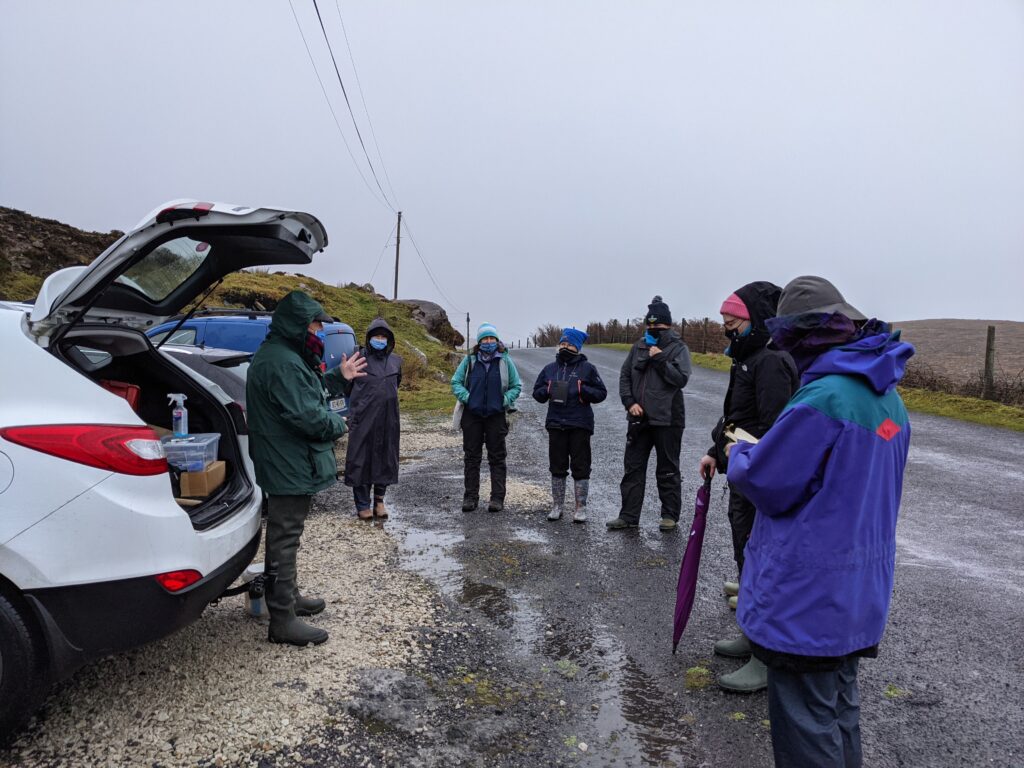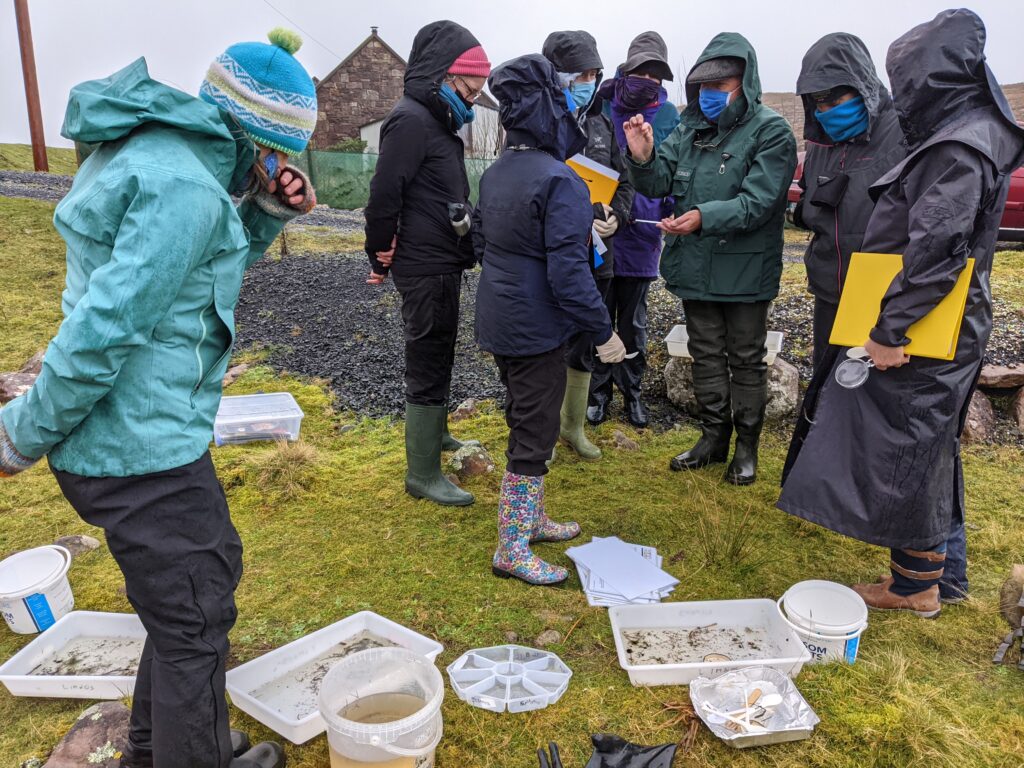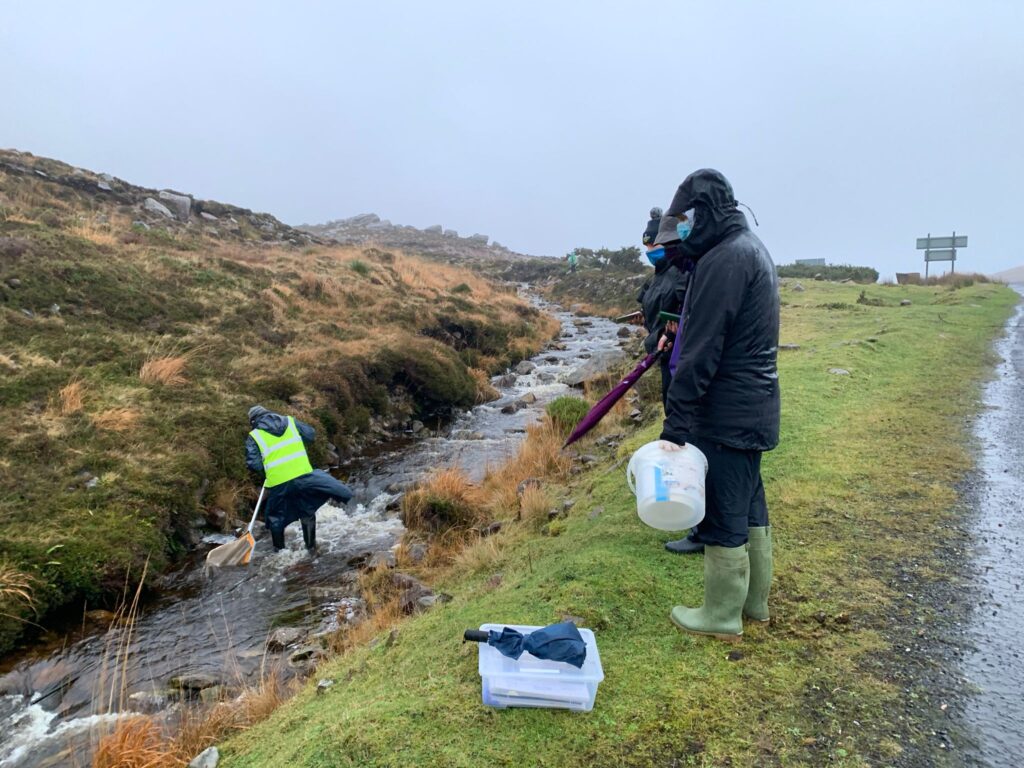On Saturday 11 December 2021 we took a field trip to Currane and Achill Island.
We took a sample from the Bolinglanna Stream that runs from Lough Ard, being careful to lift stones rather than taking a typical kick sample – so as not to disturb any salmonid redds containing eggs at this time of year. Ken thought the stream could have a sea trout run (assuming no barrier before it flows into the sea).
The stream had a fair bit of algae in it but a good range of macroinvertebrates, including a good number of filter feeders such as the uncased caddis larvae of the genus Hydropsyche and black fly larvae Simuliidae.
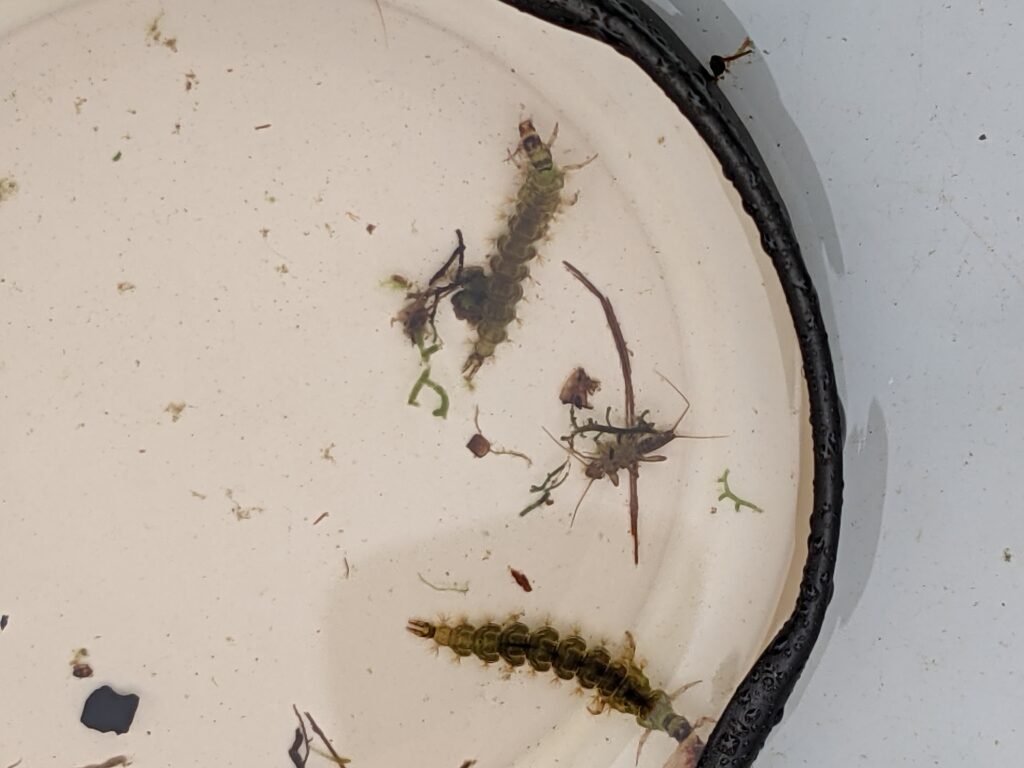

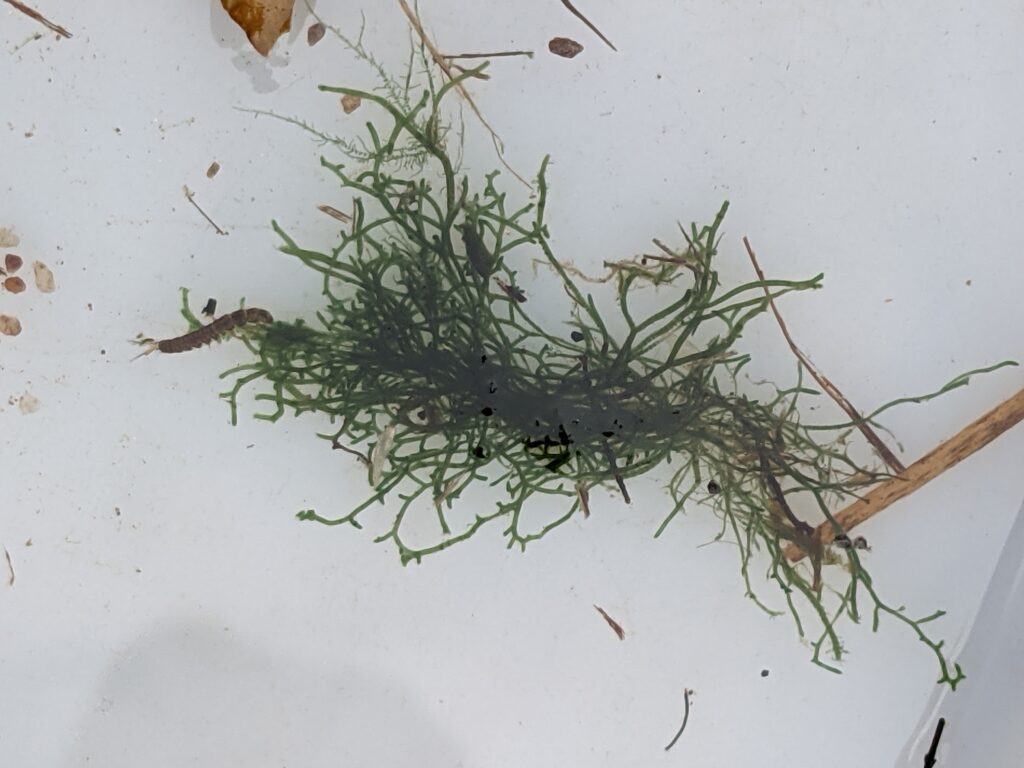
Jackie Hunt gave the group an insight into the state of the local habitat and pointed out animal tracks that were likely to belong to local otters.
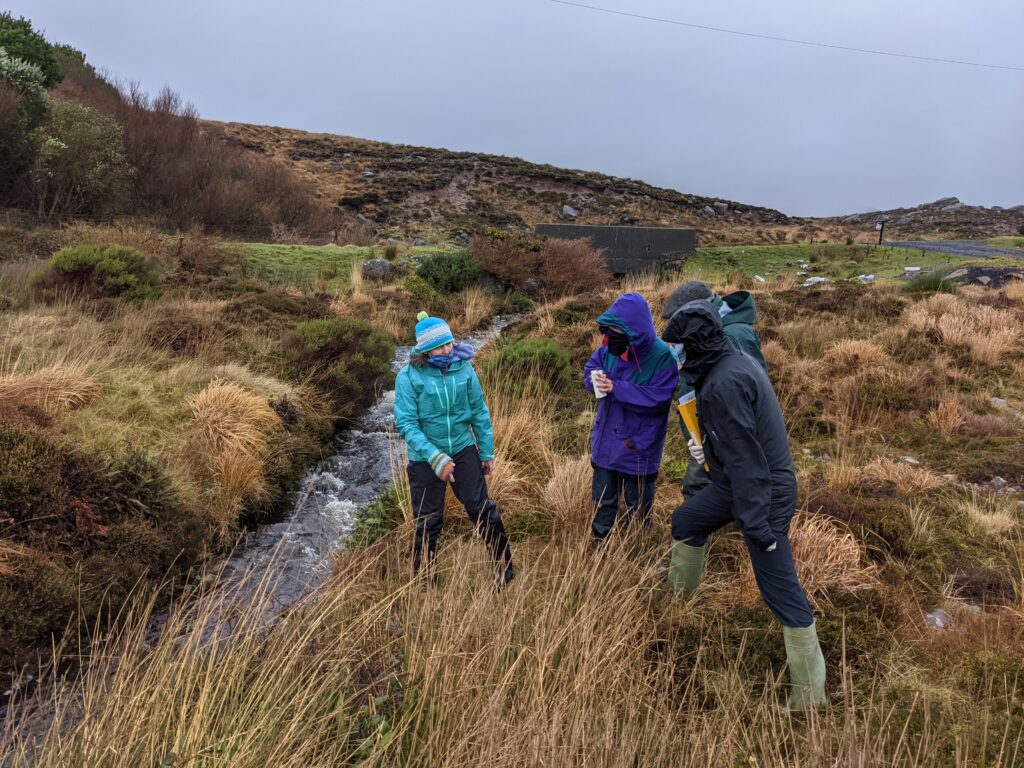
The local habitat is not as pristine as it should be with patches of the invasive plant Gunnera and signs of overgrazing evident. Gunnera is reputed to have spread from the nearby Currane House.
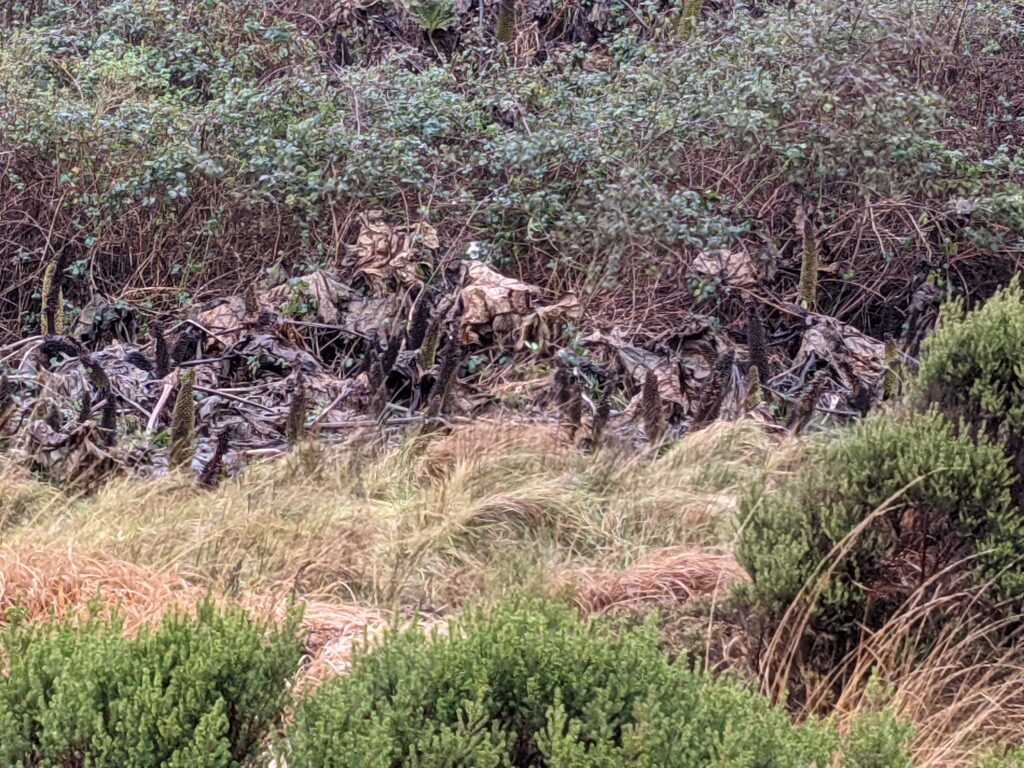
Following a cup of tea or coffee at the Currane Centre behind the church Jackie gave an excellent outline of the situation regarding local sea birds – those breeding on the Clare Island cliffs and often seen near Achill and some Black Guillemots along the Curraun coast. The Clare Island Special Protection Area (SPA) lists Fulmar, Kittiwake, Shag, Common Gull, Great Black-Backed Gull, Common Guillemot, Razorbill, Black Guillemot, Gannet, Atlantic Puffin, Cormorant, Lesser Black-Backed Gull, Herring Gull, Storm Petrel, Chough, Peregrine Falcon as species of importance there.
Jackie has provided a useful resource for the website – Information Sources for Irish Birds and Mammals. She also described and the range of dolphins, whales and seals that can be seen from vantage points along the Achill coastline – you are looking for fins and blows from the whales and dolphins. You can browse whale and dolphin sightings at the Irish Whale and Dolphin Group website.
The group had a very lively discussion back and forward – we probably should have recorded it for posterity – but suffice to say we covered a lot of water-related topics and it was clear that the group does care very deeply about their local environment. Time ran away with us but a visit to Achill Island and Keel Lough was next on the agenda.
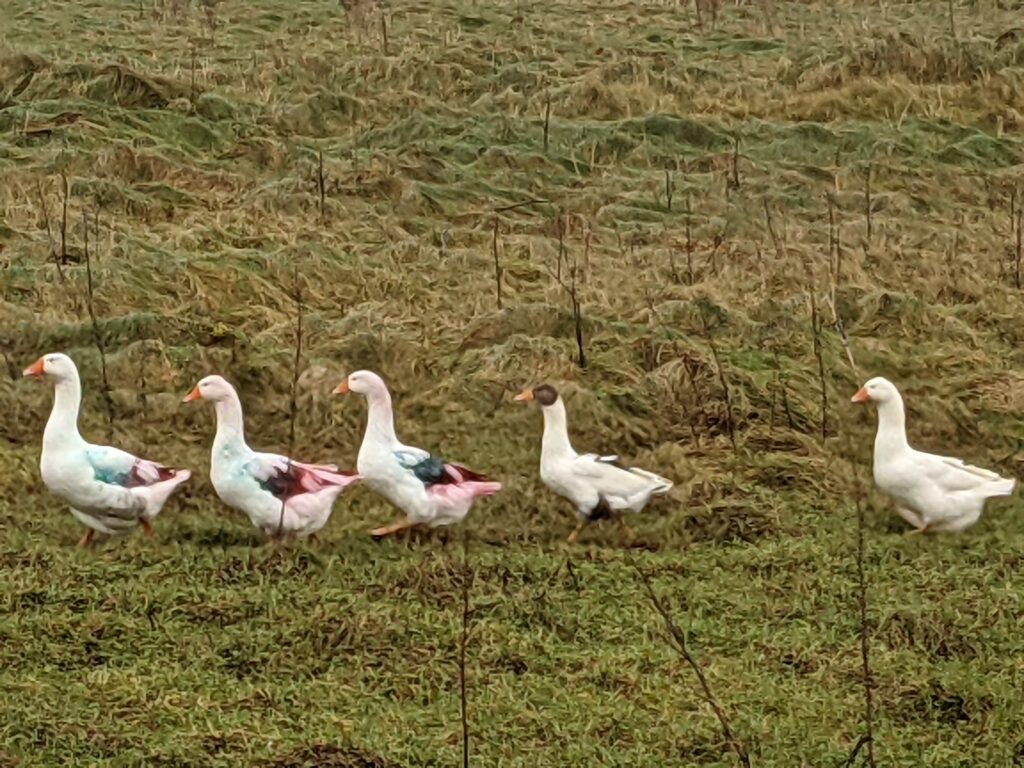
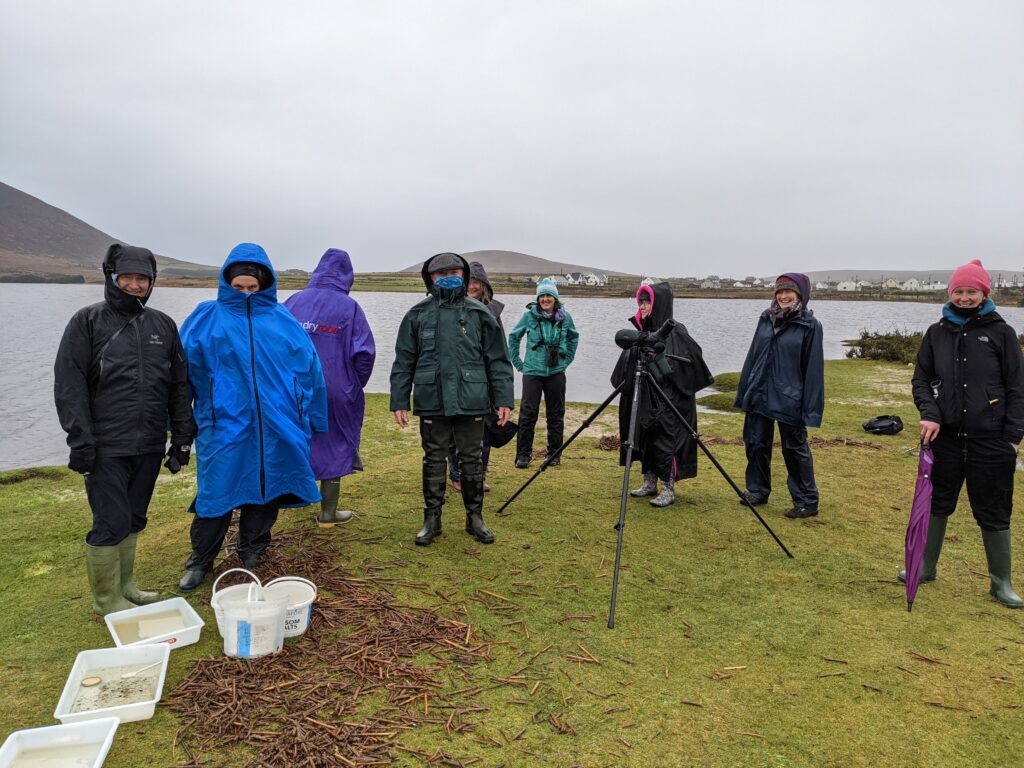
At Keel Lough
We like to contrast rivers with lakes and Keel Lough provided quite a stark contrast to the previous stream samples. Because of its sandy bottom and high water level the diversity of macroinvertebrates was quite low with freshwater shrimps (Gammarus) dominating plus some bivalves and snails were found, but generally a very low number of species. We measured oxygen, temperature and conductivity which showed it to be freshwater and not brackish at the time of sampling at least. We discussed the concept of lake stratification – although it is unlikely that Keel Lough would stratify into two layers as it is very shallow and exposed to the wind.
